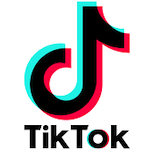The Federal Trade Commission in December updated its enforcement policy regarding online advertising deceptively formatted to look like editorial content.
Those guidelines, which take aim at the glut of native advertising content that’s gaining wide popularity online, state that marketing content that has been formatted to look like news must bear disclosures clearly labeling that content as advertising. Native ads that fail to do this fall under the Commission’s rubric of “deceptive.”
In the months since those rules went into effect, however, media outlets and digital ad networks that sell native ads have largely maintained a laissez-faire approach to the practice, typically leaving the onus of FTC compliance on the shoulders of brands, according to a new survey of online media professionals by D S Simon Media.
D S Simon Media’s “Influencers Report 2016” found that a vast majority — 81 percent — of respondents said that they haven’t changed their policies since the new FTC rules went into effect, and while more than half — 58 percent — said their website accepts paid content, only one in five media outlets admitted updating their native advertising policies in response to the Commission’s new disclosure guidelines.
Proper disclosure, however, remains a practice worth adding to communicators’ toolkits. While 94 percent of respondents reported being misled by communicators in the past, 76 percent said they would be more likely to consider using outside-produced video content as long as that content is properly disclosed.
The report also discovered a growing demand among online media for video content owned by brands. A wide majority — 86 percent — of media respondents said there’s a place for video on their site, and 71 percent said they use outside-produced vide content. Perhaps most surprising: of that outside-produced video content, 79 percent said they now use outside video given to them directly from brands, beating video received from non-profits (76 percent) and independent individuals (66 percent). 80 percent also said they now use unedited video packages, a 31 percent increase from 2015.
D S Simon Media president and CEO Doug Simon told O’Dwyer’s that this increased demand for brand-produced video content presents opportunities for PR pros seeking earned media in online channels.
“It’s a huge opportunity for communications people,” Simon said. “What we’re seeing is increased demand for what we call custom content media packages, where you pre-pitch journalists and then provide them with video content that they’ve asked you to get for them. The custom content includes messaging from the brand or nonprofit group as earned media.”
D S Simon Media’s 2016 “Influencers Report,” now in its 15th year, was based on a survey of nearly 200 online journalists and producers working in digital outlets belonging to TV and radio stations, newspapers, magazines, web media and blogs.
The report can be viewed here.


 A look at today's magazines, newspapers and the graphics on television and consumer products raises the question of whether or not designers know their intended audience.
A look at today's magazines, newspapers and the graphics on television and consumer products raises the question of whether or not designers know their intended audience. PR and marketing departments are in the hot seat, as forecasts show that growth in advertising spend stalled in 2023 in the wake of cost-of-living increases and continued economic uncertainty.
PR and marketing departments are in the hot seat, as forecasts show that growth in advertising spend stalled in 2023 in the wake of cost-of-living increases and continued economic uncertainty. WPP has forged what it calls a “first-of-a-kind global agency partnership” with China’s TikTok, a short-form mobile video platform.
WPP has forged what it calls a “first-of-a-kind global agency partnership” with China’s TikTok, a short-form mobile video platform. Widespread disinformation may derail Biden/Harris agenda, according to a coalition of advocacy groups, who see the need for government-wide strategy to repair broken information ecosystem. (1 reader comment)
Widespread disinformation may derail Biden/Harris agenda, according to a coalition of advocacy groups, who see the need for government-wide strategy to repair broken information ecosystem. (1 reader comment) There's a media appetite for positive stories right now, anything to counterbalance the steady stream of bad news from the deadly spread of COVID-19. (1 reader comment)
There's a media appetite for positive stories right now, anything to counterbalance the steady stream of bad news from the deadly spread of COVID-19. (1 reader comment)


 Have a comment? Send it to
Have a comment? Send it to 
No comments have been submitted for this story yet.